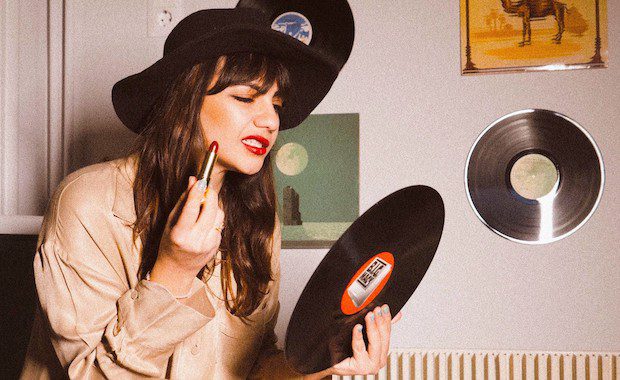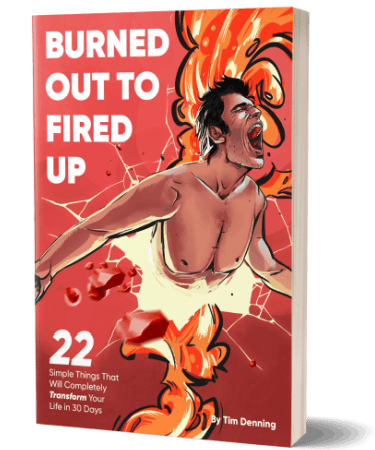Creative people used to be a joke.
In high school, I told people I was going to be a musician. They laughed out loud at me. I grew up with odd characters who wrote poetry. They too were laughed at. I had a friend who was a standup comedian. He tried to do it professionally. People at the bank he worked at during the day laughed at his nighttime gig.
Then there are writers. If you told people ten years ago that you wanted to be a writer and maybe publish a book, they’d say “get a real job ya bum.”
Not anymore.
Those who used to laugh at my creative dream are sending me private messages asking how they can do the same. What’s changed? The tech.
Fiction writers can write on Wattpad and succeed. Bloggers like me can set up a Substack and crush it. Poets can go on Twitter and leave mouths wide open. (A few male writers even went on Twitter and created a new form of poetry: broetry.) Photographers can blow minds on Instagram. Wannabe actors can start a Youtube channel and get gigs on tv shows. Singers can publish their songs on Spotify and become the next Billie Eilish.
Creators aren’t a joke anymore.
Tech has made the creator journey even more interesting than the cliche entrepreneur movement that dominated the early days of the internet, where people accidentally thought starting a business made them a god.
Maybe you haven’t unleashed your creativity online yet. It’s not too late to start. Let me explain.
The Creator Economy Boom
Let’s start with what the creator economy isn’t: influencing.
The odd category of influencers tried to attach themselves to the creator economy. The truth is influencers aren’t influencing anybody. They’ve simply become glorified network marketers. Just look at Instagram. *Does faceplant*
The creator economy isn’t about looking good or “selling product.” It’s about unleashing your creativity and making good art. Words are art. Photos are art. Videos are art. Games are art. Books are art. Poetry is art. A podcast conversation is even art.
Art never used to pay the bills for most people.
Large media companies got in between the creator and their audience. They siphoned off most of the cash to pay for their executive cappuccinos, and left creators hungry and looking for scraps. The internet changed that. Creators can now, partially, go direct to their audience.
How? By creating content aka art.
Creators focus on making their art and the tech platforms do the rest. Creator platforms either have direct monetization, like Youtube, or what I call creative monetization. Creative monetization requires a little more work. You collect the emails of your audience. You give them more content. And you occasionally charge a tiny fraction of your audience a small amount of money in return for art.
This business model started a huge boom for creators. Youtubers became millionaires. Bloggers like Ryan Holiday and Mark Manson became household names and wrote New York Times Bestselling books.
Creators were happy. They’d sing hallelujah at the dinner table while eating their vegetables and drinking their green smoothies. Rainbows appeared in the sky. Elon Musk smiled down at us from space.
Then a huge problem happened…
The tech platforms got greedy.
They kept the audience data for themselves through the follower model. Followers are simply audience members a creator can’t contact. Without contact details, creators become the Uber slave drivers to whatever platform they create on. Substack saw an opportunity. They created the “keep-your audience-data-and-take-it-wherever-you-want model.” There was one catch: you had to have an audience to bring to them.
Their model worked for established creators. It left smaller creators out in the cold. Over time the big creator platforms replaced art with more and more ads. Zucks at Facebook got high off all the excitement. His startup love child became a monster gobbling up platforms like Whatsapp and Instagram as they emerged. Then he attempted world domination of the creator world. Creators rebelled. They left. TikTok became the new kid on the block.
That brings us to now. We’re at the intersection of something beautiful for creators. Creator platforms like Facebook have realized they are wrong. They’ve got their cash cannons aimed at creators. They’re attempting like a dangerous predator to lure back the very people they ignored for ads.
More and more creator platforms are entering the scene and offering cash. The creator economy is getting stronger. Creators are realizing their value, and platforms that see the value will join us in our creative heaven.
Enormous competition has just been unlocked
Giving money to creators isn’t the real win. Creators know that money can be dangled in front of us and then magically disappear conveniently.
Here’s why you’re not too late. (In fact, you’re right on time!)
Creators are flocking to Web 3.0. Web 3.0 allows us creators to own our audience. NFT games built by creators are exploding. Axie Infinity is leading the way. Gamers are earning full-time incomes in the game. Finally.
Mirror.xyz is attempting to reinvent blogging for writers. Bitclout is turning creators into stocks the public can invest in — they even rebuilt Twitter. A decentralized version of Youtube that is censorship-resistant is on its way. Even the greedy business model of Spotify is being decentralized.
Jack Dorsey who co-foundered Twitter gets it. He’s in the process of decentralizing Twitter. Why? Jack has realized you either join the creator economy built on Web 3.0, or die holding onto the old model that takes advantage of creators and ends up being the next Myspace (soon joined by Facebook).
Imagine being at the start of the social media revolution with the ability to build a decent audience in twelve months. That’s where you are right now if you’re a creator.
Finding the right platform
There’s a tonne of noise in the creator economy. A lot of it centers around which platform to invest your time into. Writer Michael Thompson said it bloody beautifully, mate.
Don’t underestimate the importance of “where.”
Michael tells the story of his creator friend who got frustrated with the platform she chose to write on. Her writing was great but it didn’t find an audience. She ended up publishing in lots of locations.
That led to a few big business publications publishing her work, which led to a book deal. The reminder Michael gives us is there are more creator platforms opening up every day. Keep an open mind and you’ll do well.
Takeaway
Put your work on multiple creator platforms. See which ones work for your art and which ones don’t.
The Biggest Benefit of the Creator Economy
So why bother with all of this? First off, when you wake up every day and use your creativity to make art, it’s incredibly rewarding.
Corporate life taught me to hide my creativity and fall into line behind the soldiers in pinstripe suits. The creator economy taught me to express myself. You can do the same. By far the most underrated feature is this:
The creator economy can help you reach financial independence.
This doesn’t mean millions of dollars, a jacuzzi, and a Lambo. Financial independence simply means working your own hours, taking more time off, being able to take mini-retirements from creating, and having control of your work. Some people have waited a lifetime for this opportunity. The creator economy has made it a reality. I wouldn’t have said that a few years ago.
Making your first $20 from the creator economy changes how you think. Here’s the question that pops into your mind when you do: I can get paid to do what I love?
The benefits for creators are accelerating at light speed
By now you’ve heard about NFTs (Non-Fungible Tokens). Don’t get lost in the hype. All an NFT does for creators is make our work portable and allows us to prove ownership. That’s it.
I recently turned a tweet into an NFT via Bitclout.
I clicked the “mint NFT” button. Moments later the auction for my tweet began. One user paid $20 USD for that tweet. A tweet is typically 2–3 sentences. They take minutes to write. Imagine I sold multiple tweets as NFTs each day. That’s a full-time income from the creator economy right there.
The NFT revolution is moving fast. Everybody reading this can benefit and build a career centered around NFTs. You’re not late. You’re right on time.
Here’s how to join the creator economy before it becomes saturated
- Choose a creator platform: Ghost, Substack, LinkedIn, Youtube, TikTok, Twitter, Vocal.Media, Wattpad, etc.
- Publish content weekly. If you’re really keen then do it daily.
- Collect the data (likes, comments, shares, views, email signups). What content does the audience love of yours? Do more of it.
- Experiment with Web 3.0. Try out Mirror.xyz and Bitclout.
- Understand how cryptocurrency works. Wait, what? Yep, in the future the creator economy will pay you in crypto. Why? It’s fast, cheap, borderless, easily converted, digital … I can go on for hours. Start by learning about Bitcoin and Ethereum. Buy $20 worth. Send it to a friend. It’s better than PayPal, trust me, and cheaper than their ripoff fees.
Bottom Line
The creator economy is booming. If you’ve ever written an email, posted a photo, recorded a video, done a podcast, or drawn an illustration then you qualify. Don’t let anybody tell you that you can’t. Plenty of people told me the creator economy is stupid. Now they’re asking me how to join.
Let me share with you one final thought. The creator economy is so powerful because it shows you that your experiences and stories have enormous value. Many people think their life is boring so they never create content. What if your life could inspire others through art? It can.
The creator economy is changing lives. Don’t be surprised if creators saturate the internet and become the most highly valued asset. It’s about time.
Society has looked down on creatives for far too long and fed them scraps from corporate giants. Let’s change that.


